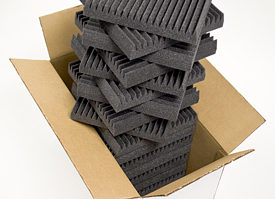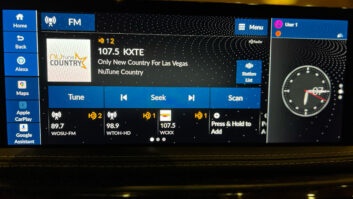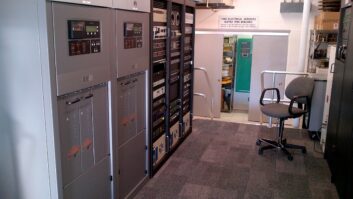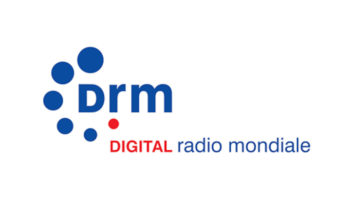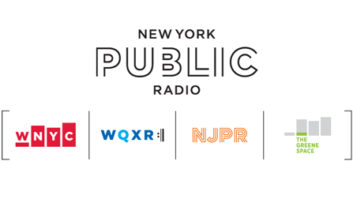This article is part of a series about best practices for HD Radio.
Jeff Welton, CBRE, is Nautel’s regional sales manager for the eastern United States. A sought-after industry speaker and educator, he has won awards from the Society of Broadcast Engineers, the National Association of Broadcasters and the Association of Public Radio Engineers.
Radio World: Jeff what should users know to get the most out of their current HD Radio transmitters?
Jeff Welton: I think the big thing is synchronizing analog and HD1 audio — use a split-mode processor, not two separate processors. Then take a 44.1 kHz word clock from the HD exporter to provide external clocking to the processor — you could also theoretically use an outboard word clock/sync generator. That will ensure that analog and HD1 leave the processor locked together. There still may be some jitter in the link to the site if the processor is located at the studio, but it becomes more controllable if the two signals from the processor are clocked.
RW: What should buyers of new transmitters be asking about digital?
Welton: The biggest question is power headroom — but not just for the transmitter, for every aspect of the RF chain. Consider whether the transmitter will be big enough to accommodate not just current, but future goals, for sure. However, also ask whether the coax, the couplers, the channel combiner, the antenna and anything else in the chain will be able to handle not just the added peak power, but the peak voltage.
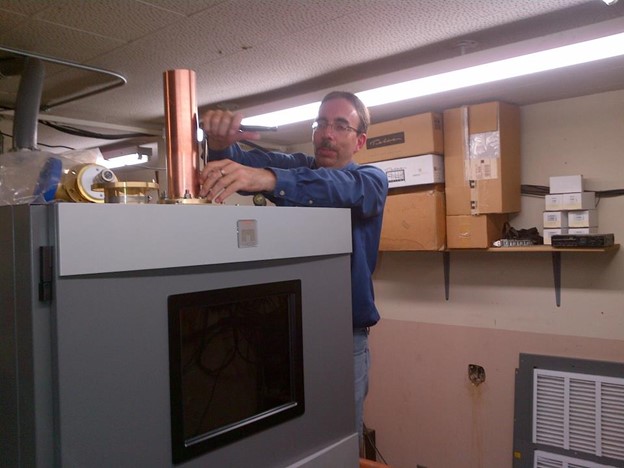
RW: Are today’s transmitters better equipped to support HD Radio than 20 years ago?
Welton: Very much so — advances in FET technology have allowed for even greater efficiencies. Improvements in peak to average reduction (PAR) algorithms also help reduce the hit to the power bill. And better predistortion and group delay correction mean better coverage, watt for watt, on any HD Radio signal.
RW: How can stations assure that their transmitters would have enough headroom to take advantage of higher digital power above –14 dBc, if the FCC allows it?
Welton: First, it’s important to note that it’s already allowed: With a consultant study to verify that no harmful interference to first-adjacent channels is likely, a station can request permission to operate at HD carriers up to –10 dBc injection, or with an experimental license, to operate asymmetrically, up to the limits of the rules regarding interference.
The current NPRM will simplify this process, removing the experimental license requirement for asymmetry and making –10 dBc the standard, but the ability to do the higher injection levels already exists.
Back to the question, it’s really two-fold.
First, what can we legally do with respect to injection — i.e., how high would we likely be allowed to go? Second, what will the power headroom of our equipment — transmitter and associated components — accommodate?
The first question can be answered on our complimentary HD Radio calculator, which you can find here. It does require a log-in, but anybody can sign up.
The answer to the second question will require input from your transmitter manufacturer. They may advise reaching out to antenna, combiner and filter manufacturers as they ask about ancillary components, but from the transmitter perspective, it’s always best to ask.
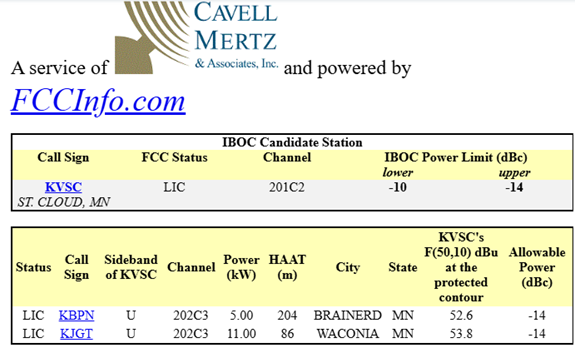
Speaking only for Nautel, our sales managers are equipped with tools to allow them to check transmitter capabilities for various configurations such as MP1, MP3, asymmetry, etc., so if you’re looking beyond the stock –14 dBc on both sidebands, absolutely reach out to your vendor and not just relying on published spec sheets.
It is also worth noting that some vendors use total power (FM+HD) in their specifications, as opposed to analog TPO only, so the number may look higher while actually being lower. Always verify to be sure that you don’t come up short.
RW: How has the evolution of transmitters changed the way engineers plan these installations?
Welton: With the advent of virtualization and elimination of the need for time delay correction, it is going to be important to ensure that there is a solid IP link between studio and site, and it may not be necessary to run analog links except for backup purposes.
There’s a lot more to it than that, but as the technology evolves, it reduces the number of devices required. That decreases the chances of, for example, an HD stream going down due to the failure of a cheap wall wart in a budget audio device. It also adds power in the form of having the ability to monitor everything online, from wherever the engineer happens to be. We’ve seen this trend growing since the mid-2000s and it still is evolving.
RW: What will future designs look like and how far will the trend toward a software-based air chain go?
Welton: As far as software allows. Right now, audio is delivered as bits over an IP link of some sort; HD equipment can be fully virtualized and located in the transmitter controller, eliminating the need for analog vs. HD1 time delay correction and a lot of STL-related components. Processing can be virtualized or containerized and run either at the studio end or in the transmitter, removing more physical devices. And the exciter is essentially a software-controlled device.
I expect we’ll see further simplification and evolution of technology, but it is very much the next step in the evolution of technology.
RW: How can an engineer determine if their station can benefit from the commission’s recent decision to allow asymmetrical power levels on most FM frequencies?
Welton: We mentioned this earlier, but definitely run our HD Radio calculator first. Understand that it is only meant to be a guideline; however, it should give a starting point to see if it is even worth reaching out to a consulting engineer.
While the report and order took effect in November of 2024, there is still discussion revolving around power measurement methods and permissioning of asymmetry, so it would be best to establish the paper trail early on. Note that to run asymmetry, digital notification form 335-FM is still required to be filed in LMS; however there’s no longer a public notice requirement.
RW: What should an engineer know to choose the proper antenna, and what are the combining considerations now that more of the HD Radio air chain resides within the transmitter itself?
Welton: Decades ago, it was common practice to “slope tune” an antenna. That is, tuning would be offset from the center of the pass band to allow for better performance under icing conditions. As ice built up and impacted tuning, it would pass through the “sweet spot” and come out the other side, allowing for longer operation before transmitter SWR protection took over.
With the advent of HD Radio, this practice was stopped and antennas are tuned for best match and symmetric sidebands for better performance. For the most part, any antenna less than 20 to 30 years old will be center-tuned and will be fine for HD; but it never hurts to check tuning as part of the process. Also, let your consultant or manufacturer know if there are any other situations that need to be considered — short-spaced channel combiners, for example.
RW: What common misconceptions would you like the industry to be aware of?
Welton: There’s a lot of myth held over from earliest iterations of the technology — “sounds bad, coverage sucks,” etc. Most of that can be overcome by proper implementation or has been resolved through improvements in technology. Don’t assume that HD Radio today suffers the same limitations that it did in 2005.
That said, there are also a lot of broadcasters who treat it as an afterthought: overdriving processing, running minimal HD installations simply to drive a translator, for example. Those cases will always exist but are not indicative of a limitation of the technology.
RW: Speaking of processing, what special considerations come into play?
Welton: Less is more. Less compression, more dynamic range — it will result in better audio, with fewer objectionable artifacts. Avoid sample rate converters in the chain as much as possible — essentially, the same methods that apply to creating a quality streaming audio signal will work for HD Radio secondary channels.
RW: What steps can an engineer take with processing to make the FM+HD1 sound as good as possible?
Welton: This is a loaded question. Obviously, the trend in analog FM is for more compression and higher average modulation. In HD1, backing that off a notch will result in better results. However, you don’t want the difference to be so significant that it becomes objectionable when switching back and forth between analog and HD, such as in a fringe listening situation. There is a fine line, and it will ultimately be up to the team of engineering and programming to determine when the best balance is achieved for any particular station.
RW: And how about processing for the HD2, -3 and -4 channels? Can that be done at lower cost?
Welton: Use streaming processors, or ones that are optimized for the lower bitrates. Do not drive them to clipping, keep some dynamic range in the audio and let the processor do its job. Absolutely it can be done at lower cost — there are a plethora of good budget-friendly processors out there from several manufacturers. Depending on what you are using for HD generation, it could even be possible to load a software-based processor directly into the HD importer. For example we can provide Omnia software processing for HD2/3/4 as part of the solution in our HDMC+ combined exporter/importer.
RW: Software-based processors are becoming more common. Are they appropriate for HD Radio air chains; why or why not?
Welton: Absolutely. As with hardware, to some extent you’ll get what you pay for in terms of features and capability, but a software-based processor can come from some of the biggest names in the industry, so to negate it simply because it is software is not ideal.
Ultimately, the focus, especially for the secondary channels, should be to have a processor that’s perceptually coded for low-bitrate audio. Think back to the Neural Audio software processor back in the early days of HD Radio — it did a great job of handling the low-bitrate audio without creating artifacts. Of course, none of that matters if the compression is set to 11 and the dynamic range is measured in fractions of a dB.
Read more articles in the Radio World ebook “HD Radio Best Practices 2025.”


